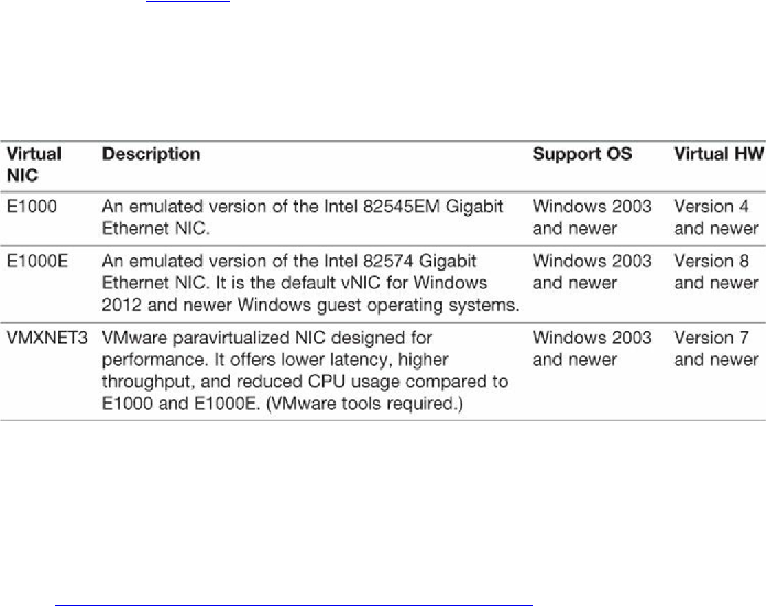Database Reference
In-Depth Information
to “keep it standardized and simple.”
Choosing the Best Virtual Network Adapter
The three main virtual network adapter choices for configuring your virtual machines
for Windows 2012 and above. However, the recommended network adapter is
VMXNET3. VMXNET3 consistently shows the best performance, lowest latency, and
highest throughput for the best CPU cost efficiency and is optimized for a VMware
environment. Unless there is a problem that prevents you from using VMXNET3, it
should be the standard vNIC configured in all your VM templates.
Table 8.1
Virtual Network Adapters
Note
When VMXNET3 was released with vSphere 4.0, VMware published a
performance evaluation that compared it to other network adapter choices.
You can review this paper at
Figure 8.1
shows the relative performance between the different virtual network adapter
options. The tests used the default maximum transmit unit (MTU) size of 1,500 bytes as
well as Windows 2012 running on vSphere 5.5 on a 10Gbps network between hosts.
The hosts had two eight-core Intel E5-2650 v2 (Ivy Bridge) CPUs, 256GB RAM, and
an Intel 82599EB 10G SFP+ dual-port NIC. Multiple test iterations were measured
using the netperf tool (
http://www.netperf.org/netperf/
) and a single TCP stream. The
graph shown in
Figure 8.1
uses the average results of the multiple tests. The same hosts
were used for all network performance tests for data in this chapter.








